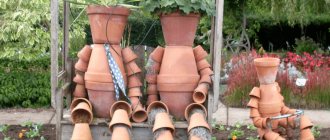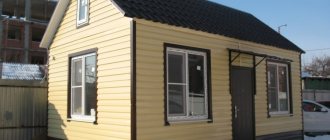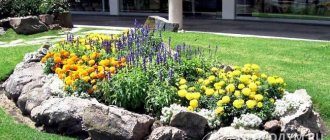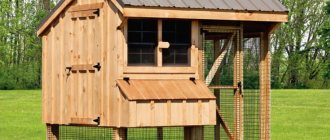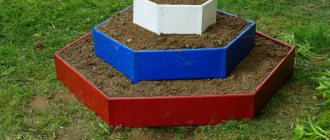When arranging a garden, specific designs are often used that effectively decorate the area. One of these elements is a wooden arch for the garden.
The design is not difficult at all if you approach the installation process carefully and creatively. To build it, it will be enough to familiarize yourself with the main stages of assembly.
Country houses
An arch for a dacha is the most successful solution for decorating a site. Decoration will be ensured 100%. In addition, these structures serve as a support for plants, can become a compositional component of the landscape, act as support for load-bearing pillars in the area of doors in the fence, driveway, complement the places of swings, hammocks, or act as a gazebo.
That is, the structure has quite a lot of purposes and everyone decides for themselves how they will use the architectural composition. The decision can be either group or individual.
Wooden arches
The most basic design is made of two stairs. Place them parallel and connect them at the top with a crossbar. Reinforce the joints with iron sheets.
For the pergola you will need:
- Beam - width 100x100 or 75x75, length from 2 m
- Board – 20x200
The timber is installed vertically and forms pillars (supports). The number of support pillars depends on the size of the pergola (there can be 4, 6 or more).
Externally, the structure will resemble a rectangular gazebo. The two outer supports are connected by a beam on one and the other side of the pergola.
Crossbars made of edged boards are attached between the beams. For stability, the support pillars go deep into the ground. The depth of the pit is from 0.5 to 1 m, depending on the soil.
Additional crossbars or ropes stretched across the boards and along the posts will allow the vines to weave more tightly around the structure.
Accenting
The photo of the garden arch shows that the structure can be a delightful garden decoration. There are no requirements for its installation and dimensions as such. Even a very small structure can attract attention if it is designed correctly.
Looks great when used as part of a garden path. Beauty and functionality will work in tandem if you build it above a bench.
It turns out to be a great place to relax! The shadow formed over the bench will make spending time on a stuffy day pleasant.
It is also important that with the help of an arch you can not only improve the area, but also hide some shortcomings.
When installing several objects, you can create a small tunnel that will perfectly complement the entrance. On a spacious plot, it is possible to organize a shady arched alley entwined with plants.
By placing benches inside, you will get a wonderful relaxation area where you can take a breather from the summer heat while enjoying the scents of flowers.
Grape
The foliage-rich grape is frost-resistant, unpretentious, and grows well in shady conditions.
The grapes can be planted at some distance from the base. It grows easily and climbs up the frame itself, enveloping the structure in a green cover. Requires pruning of shoots to form a crown.
Zoning
Today, the division of territory into zones is no longer done using solid fences. This solution is a thing of the past.
Arched structures came to the rescue. They don’t just divide the area, they make it functional. This means that each part will carry out the task that is assigned to it: a vegetable garden, a local area, a recreation area, etc., while looking beautiful.
Evergreens - a complete list with descriptions and recommendations from a gardenerVertical gardening - from idea to implementation, choosing options according to budget and attractiveness (photo + video)
- Vertical flower beds - basic principles and rules for choosing plants and arranging a suburban area with your own hands
And most importantly, it is quite possible to make a garden arch with your own hands.
Configuration
Structurally, the arches differ only in the design of the vault:
- arc;
- gable “house”;
- U-shaped design;
- semicircle;
- console.
Made from wood
Wooden arches are acceptable in terms of price. Their main advantages are appearance and environmental friendliness. This type of structure is popular among summer residents because its installation is quite quick.
You can create a real masterpiece from ordinary lining and fastening materials. At the same time, it can be coated with either paint or varnish.
However, there is a drawback - a rather short service life. Rotting, fungi, parasites, precipitation, and sunlight affect the service life.
To prevent these negative influences from damaging the structure for as long as possible, it is coated with special protective solutions and impregnations at the creation stage.
Decorative grass - 140 photos of original design. Review of the best varieties of grass for the garden, instructions, reviews, videos + gardener recommendationsWatering the site - types and types of systems, main differences and features, rules for selection and installation, as well as recommendations for operation
Ornamental plants - 140 photo options. Review of the most popular plants with names and descriptions. Gardener's recommendations + reviews
Types and features
Before you begin choosing the design and selecting materials for the future product, you need to determine its location.
- It can stand separately, then it will be an isolated structure. It is often placed at the entrance to the garden, for example.
- Several combined structures will form a tunnel. But in this case, the garden area must match; in small areas it will look out of place.
- You can decorate an empty wall of the house, make a corner extension, then the decorative part will become its continuation. But still, more often pergolas - wooden canopies - are placed in this way.
Instagram @topgarden777
Instagram @danisartgarden
Instagram @knightfencing
Flower Market
Design Rules
When designing a future product, it is also important to take into account a number of points.
- Its height should be at least 2 meters so that the support does not look squat and cramped. And more than 3 meters, otherwise it will be too bulky and high.
- Width - at least one and a half meters. Otherwise, when the flowers grow, the structure will have an unkempt, neglected appearance.
- The model can be mobile, without support, then it can be easily moved around the site. But in this case, carefully choose a climbing plant; it should not be heavy.
- Don’t forget about aesthetics; in winter, the structure will stand without plants, so its appearance should not clutter or spoil the landscape.
- Forged products are good in a classic garden, and wooden ones are suitable for simple areas decorated in rustic or Provence style.
- Country cottage area
Making a wooden gate with your own hands: instructions from choosing the material to assembling the parts
Metal
Garden arches made of metal are most often created from thin rods and profiles.
The forged structure looks incredibly beautiful. At the same time, it is worth taking into account the high cost in comparison with other analogues and long service life.
It is also important that to install a metal structure you will not have to additionally prepare the location.
Even metal has disadvantages. It is exposed to negative environmental influences, resulting in corrosion. To make this stitching last for many years, it is necessary to treat the surface with special compounds.
pros
Strength, reliability, and therefore a beautiful decorative design will last for several decades.
Boxwood: planting, care, growing in open ground, propagation. Full description of the plant from A to Z. More than 100 photos of evergreen shrubsLiving fence - the best ideas on what to make a hedge from at your summer cottage. Many photos of ready-made options with exclusive designs + instructions
- Trimming bushes - the basics of choosing the right plants and forming the right shapes, selecting tools (photo + video)
Long service life and, importantly, metal arches, as well as wooden ones, can be made independently or purchased ready-made variations.
Metal arch
The easiest way to build a frame from thin metal rods. The soft and pliable material bends easily and can take any shape.
For greater stability, reinforcement is used. Load-bearing supports (arches) should be made of thicker rods (section 10 mm). You will need two supports connected to each other by crossbars. The cross rods are thinner in size (section 6 mm).
The plexus of elements can bend in any direction and take the form of a snake or rings. By connecting pieces of rod perpendicularly, you can create various mesh patterns.
Reinforced parts are welded to the base or fastened with wire.
A natural stone
An arch made of stone looks solid and solid. The territory gains “status”. And most importantly, the design is durable, so the installation location must be carefully thought out.
The structures look massive; it makes no sense to install them in small areas; they will look ridiculous. And this is not to mention the fact that it will “steal” free space.
The only drawback is that without the skill of a mason it is unlikely to be installed on your own.
Clematis
Thick, lush clematis beautifully entwines arched compositions and decorates the garden until autumn.
Clematis grows well in fertile soil. They require care and regular watering.
They need timely feeding. Do not plant close to the base; leave free space (20-30 cm).
Plastic
Often, summer residents opt for arched plastic devices. They are sold everywhere and are easy to install. The material does not require additional processing, since it does not rot and is not “attacked” by parasites. Easy to care for.
The main drawback is that the structure cannot be left on site during the winter. The fact is that low temperatures have a destructive effect on it.
This means that at the end of the summer season it must be dismantled and stored indoors. Another disadvantage is the small selection of colors: white, green, brown.
It is also important that such arches are not mounted on the sunny side. UV rays have the same detrimental effect on plastic as frost. Constant exposure to the sun will lead to deformation of the device and burnout. Decorative qualities will be lost.
Climbing varieties of roses
Rose bushes require minimal care. In autumn they are covered with special material to protect them from frost.
Excellent aroma, a large selection of varieties, a variety of colors, and the elegance of the buds do not leave gardeners indifferent to these flowers.
Structures made from various raw materials
Arches for plants in the garden can be combined, that is, made from several materials. The originality and zest of the site is guaranteed. Wood, brick or stone combine perfectly. If you need airiness, then you should pay attention to wooden arches with forged elements.
Such designs easily fit into any landscape. The result is a complete composition that does not need to be decorated with climbing plants.
Hop
A fast-growing plant that does not require special attention. It can take the shape of an arch in just 1 year. The fruits have healing properties.
A tincture made from the fruit will cope well with psycho-emotional disorders. A decoction of the fruit is used as a diuretic. It also helps strengthen hair and stimulate its growth.
Plants
A variety of plants can be used to decorate arches in the garden. For example, climbing roses look just great. In addition, they give off a dizzying fragrance.
It is worth remembering that roses do not tolerate cold, so wood or plastic is best suited for them. Of course, when choosing, take into account the climate of the area and the characteristics of the varieties.
A garden arch for climbing plants is great for evergreen ivy.
An unpretentious plant with emerald foliage can create a magical atmosphere. You just need to take into account that it takes quite a long time to gain strength, but after that it will open up to its full power.
Clematis will delight you until late autumn. He is as beautiful as a rose. However, the plant is picky about the soil, loves a lot of moisture and frequent feeding. It is necessary to plant not tightly, maintain a distance of at least 20 cm.
Bougainvillea reaches 10 meters, so it is a chic decoration of the arch. The variety of colors is amazing. Flowers of different shapes can be white, orange, crimson, purple.
Now you just have to decide on the shape of the arch and the plant that will decorate it. But, regardless of the choice, the site will be transformed.
Ivy
An evergreen, perennial plant with particularly lush greenery. Ivy is easy to care for and frost-resistant. Looks beautiful in arched elements even in winter.
It must be borne in mind that for full formation it requires much more time than other loaches.
Materials for production
If everything is clear and simple with the design and appearance of the arch, then not many can imagine that a pergola is a structure that can serve as a decorative element in decorating a garden plot, or can protect from the sun’s rays on hot summer days. All this may be determined by the size of such a structure and the purposes of its use.
Garden arches and pergolas can be made of wood, metal, stone, or a combination.
Thus, we can conclude that a pergola is a gardening structure, which is a wooden or metal frame with a flat or spherical surface, and it is supported by columns or pillars. Pergolas can allow light to pass through, or they can have a lattice-like canopy.
A pergola has always been built to support some kind of plants. A pergola for grapes looks very interesting on a country plot. Today it has become very fashionable to hold wedding ceremonies outdoors. The ceremony cannot be decorated without using a garden arch such as a pergola for roses. The newlyweds stand in it at the time of their marriage.
Typically, such decorative structures are made of metal using forged elements. These designs are small in size but look very elegant.
Now pergolas on a suburban site serve as a dividing element between the individual zones of the site. They can be the entrance to a recreation area or gazebo. A pergola at the entrance to the site will also look very interesting. You can build it with a small gate.
Such structures are made over paths and decorated with climbing plants.
The word "pergola" is translated from Italian as "trellises". A pergola is not only a decorative garden arch, but also a canopy that is added to the house. Quite massive structures of this type were erected in Ancient Rome.
They could be very long and wide and covered the leading streets of a city or village from the sun. Also, dining areas were often made under such a unique canopy.
- In Egypt, wood was practically not used. Their pergolas were made of stone. Late Renaissance gardens contained a large number of such decorative arches.
- Interest in pergolas has not disappeared at the moment. They have become very popular, and in almost every suburban area you can find pergolas of different sizes and made of different materials.
- Lightweight pergolas, which were built using two poles fixed crosswise, are called trellises or trellises.
The main thing is that the entire structure has good strength and can withstand strong gusts of wind.
Arched integration
It is possible to place arches not only near the entrance or paths, but also as an element delimiting individual parts of the site.
It is not at all necessary to make the entire arch from one material. In this case, you can safely experiment, implementing non-standard solutions.
A bench can be installed in an arched metal arch. This will make her more attractive and interesting. To create a romantic setting, it is recommended to add a lantern and a few pillows.
Trellis
Trellis can be used as decorative elements. They are placed in a flower bed and climbing plant species are planted nearby.
Arches made of thin metal are often made two-level. Such designs are extremely elegant and unique.
You can make a fence of arches to separate the garden from the rest of the area. It will give a fabulous appearance to the site.
Modern versions of arches can be made in any size and painted in the most incredible colors. They transform the entire area, making it more interesting.
The best color options for a pergola
In order for the building to take on a finished look, it is necessary to entwine it with plants. For landscaping a gazebo or screen, one or two vines are enough. For example, climbing rose and clematis are ideal companions. But these are not the simplest crops.
If you are new to gardening or don't want to devote a lot of time to gardening, choose one of these lists:
Perennials:
- Amur or girlish grapes
- Hop
- Tree pliers round-leaved
- Wisteria (blooms only in the south)
- Honeysuckle or honeysuckle
- Actinidia kolomikta (by autumn, some of the leaves change color to white or white-pink)
- Schisandra chinensis
- Ivy (may not survive cold winter without shelter)
Annuals:
- morning glory
- Kobeya
- Sweet pea
- Nasturtium
- Dolichos
- Decorative pumpkin
The following plants also look interesting:
- hop,
- honeysuckle,
- wood plier,
- clematis,
- nasturtium,
- bindweed,
- Chinese lemongrass.
If the suburban area is located in the southern region, then wisteria or roses will grow well on the pergola.
Advice. Climbing plants that wrap around a pergola require regular and proper care. It is necessary to constantly feed them with minerals and nutrients, since such plants will be in an unprotected state from exposure to sunlight. If this is not done, then over time the plant will die, and it will be quite difficult to revive it.
Pergola compositions in suburban areas are often decorated with flower beds.




